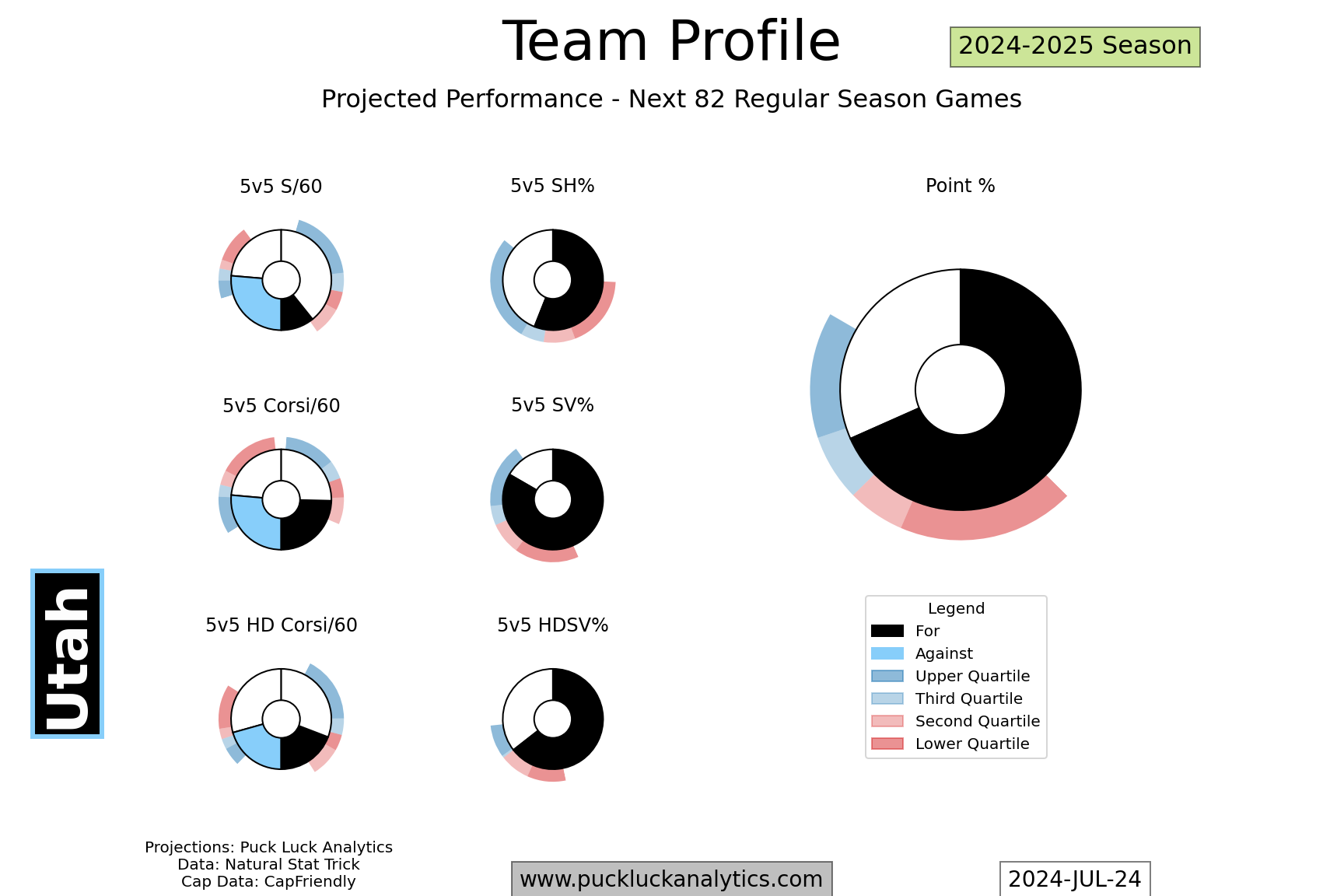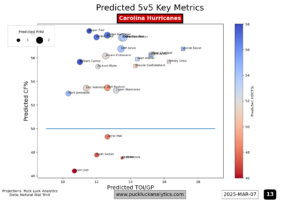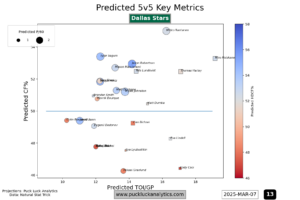One thing looks certain after the Utah Hockey Club’s inaugural offseason: this team is not the Arizona Coyotes identical twin. The shift in the front office mindset after the team’s relocation to Utah was a stark contrast to the way the team has operated in recent years.
I last looked at the Utah Hockey Club in April, shortly after the news broke that the team was leaving Arizona. At the time, we noted that the club had plenty of good young pieces and looked like they could be ready to start pushing toward the playoffs with a few smart moves. Clayton Keller and Lawson Crouse were two building blocks in their early prime that the team could start adding pieces to build a cohort around, with another wave coming in a cohort built around their young prospects and upcoming draft picks.
Reinforcing the D
In April’s post, we noted that Utah needed to bolster it’s defense core if the team wanted to start climbing back to respectability. Sure, they had added Juuso Valimaki and Sean Durzi in opportunistic moves over the past couple of seasons and both were serviceable NHL defensemen for the Coyotes last season. Good enough that they signed both to extensions between the draft and the opening of UFA season.
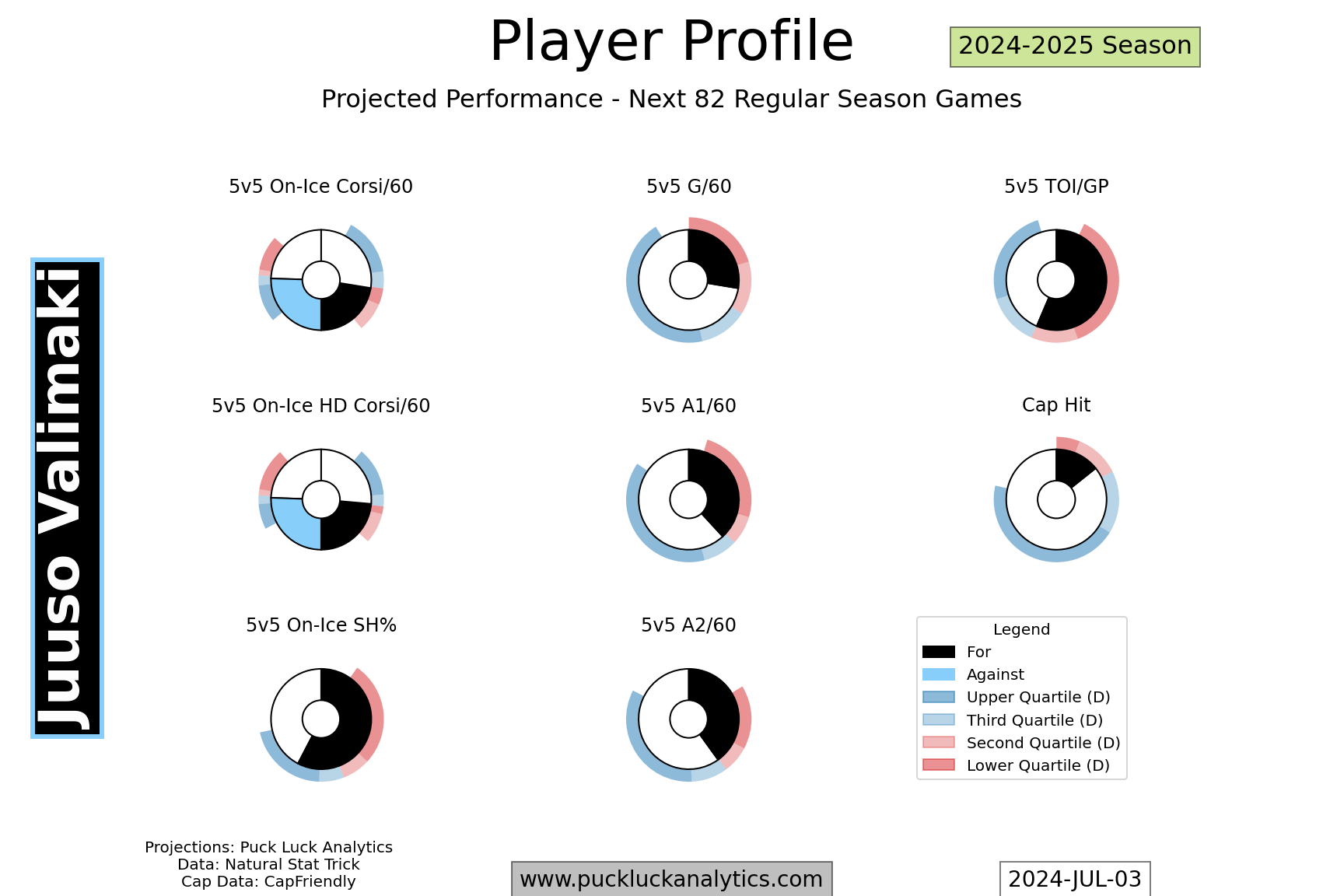
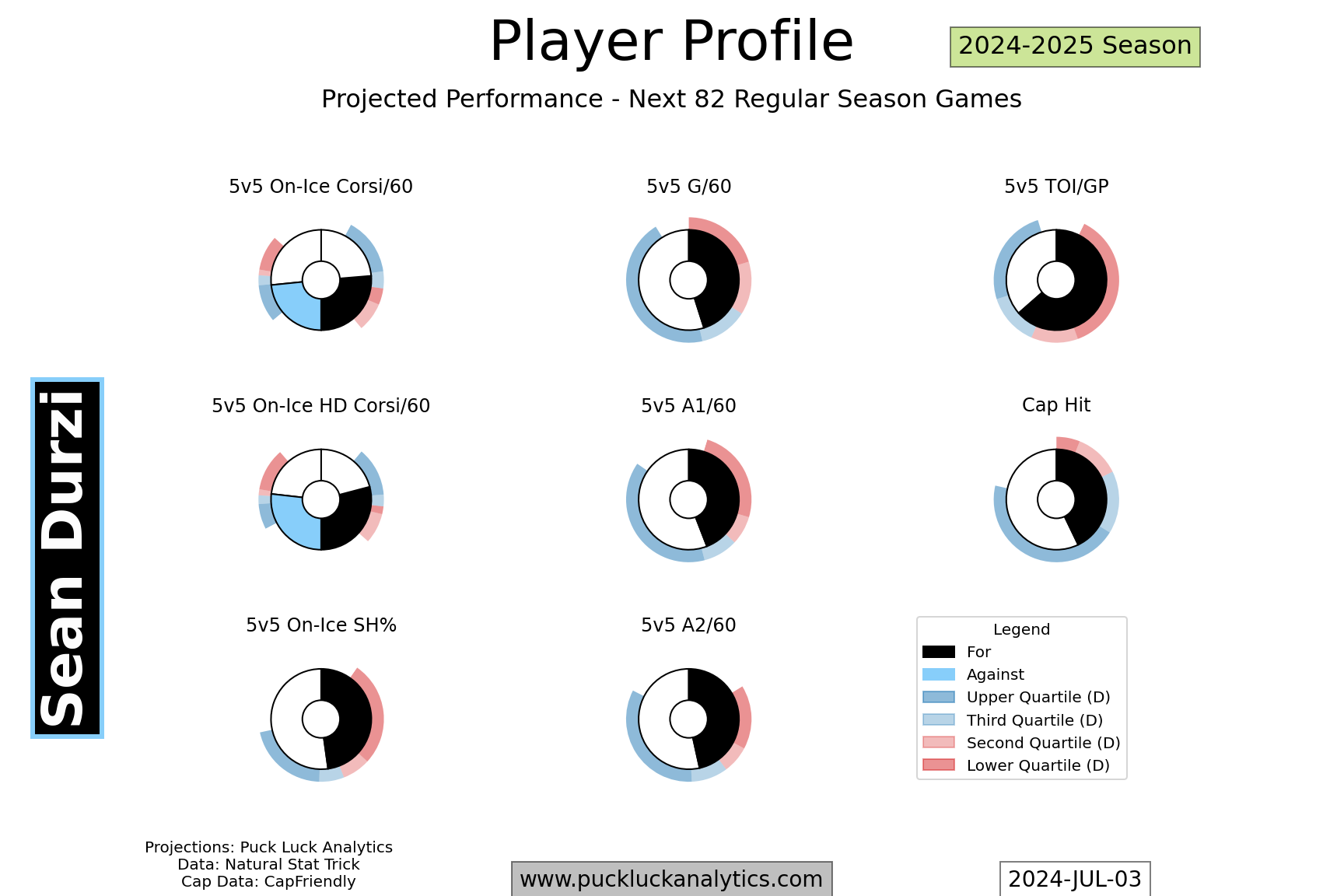
What Utah truly needed, however, was to add one or two defensemen to the top of their rotation and bump the rest of the group down to increase impact through the entire group. That was the path to truly upgrading their blue line to start working their way up the standings.
GM Bill Armstrong did exactly that on day two of the draft. Utah swung two big trades, bringing in a couple of top four defensemen. They sent J.J. Moser, Conor Geekie and two draft picks to the Lightning to acquire Mikhail Sergachev to help the Lightning clear cap space. Then, they acquired John Marino and a 5th round pick from the Devils for two 2nd round picks.
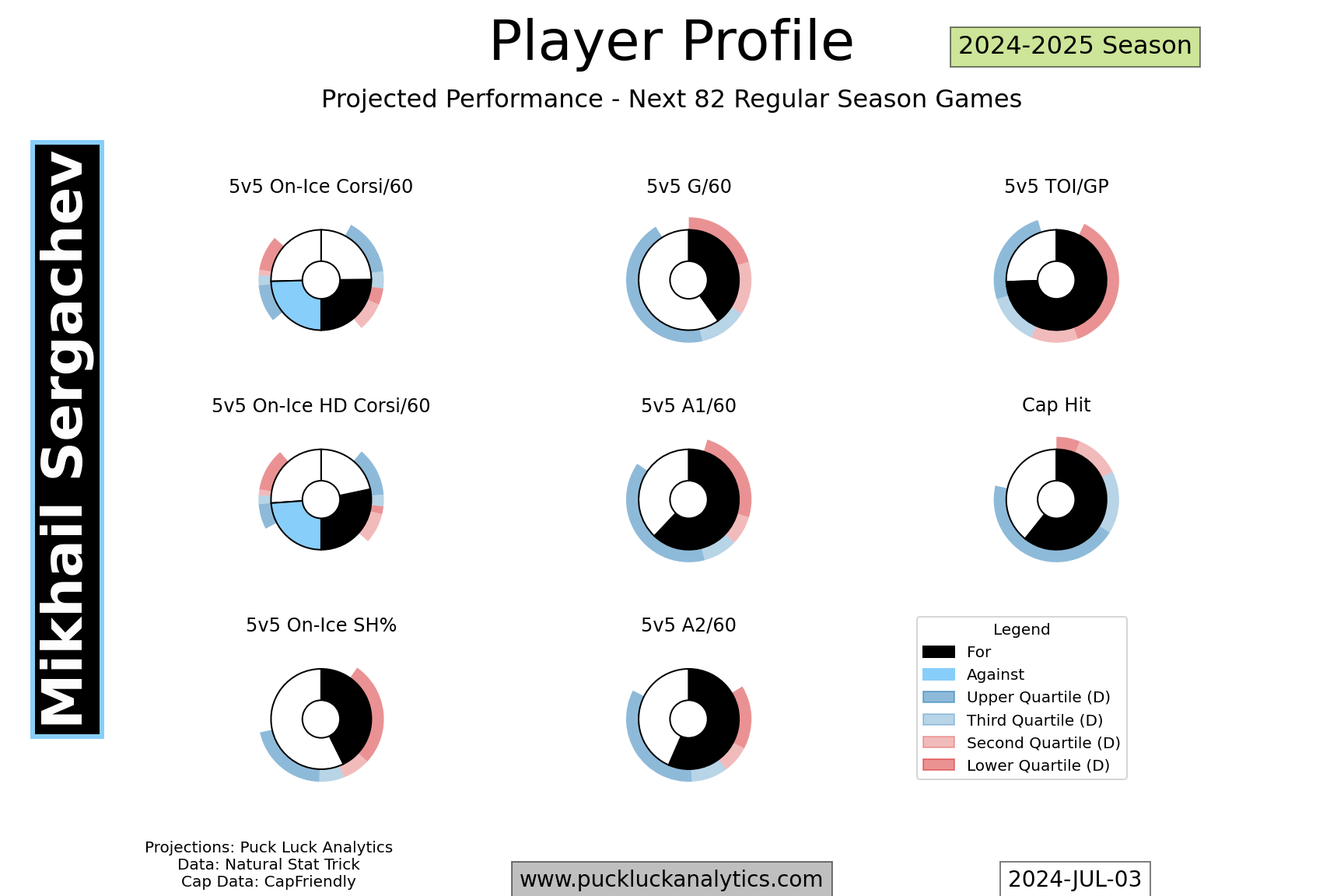
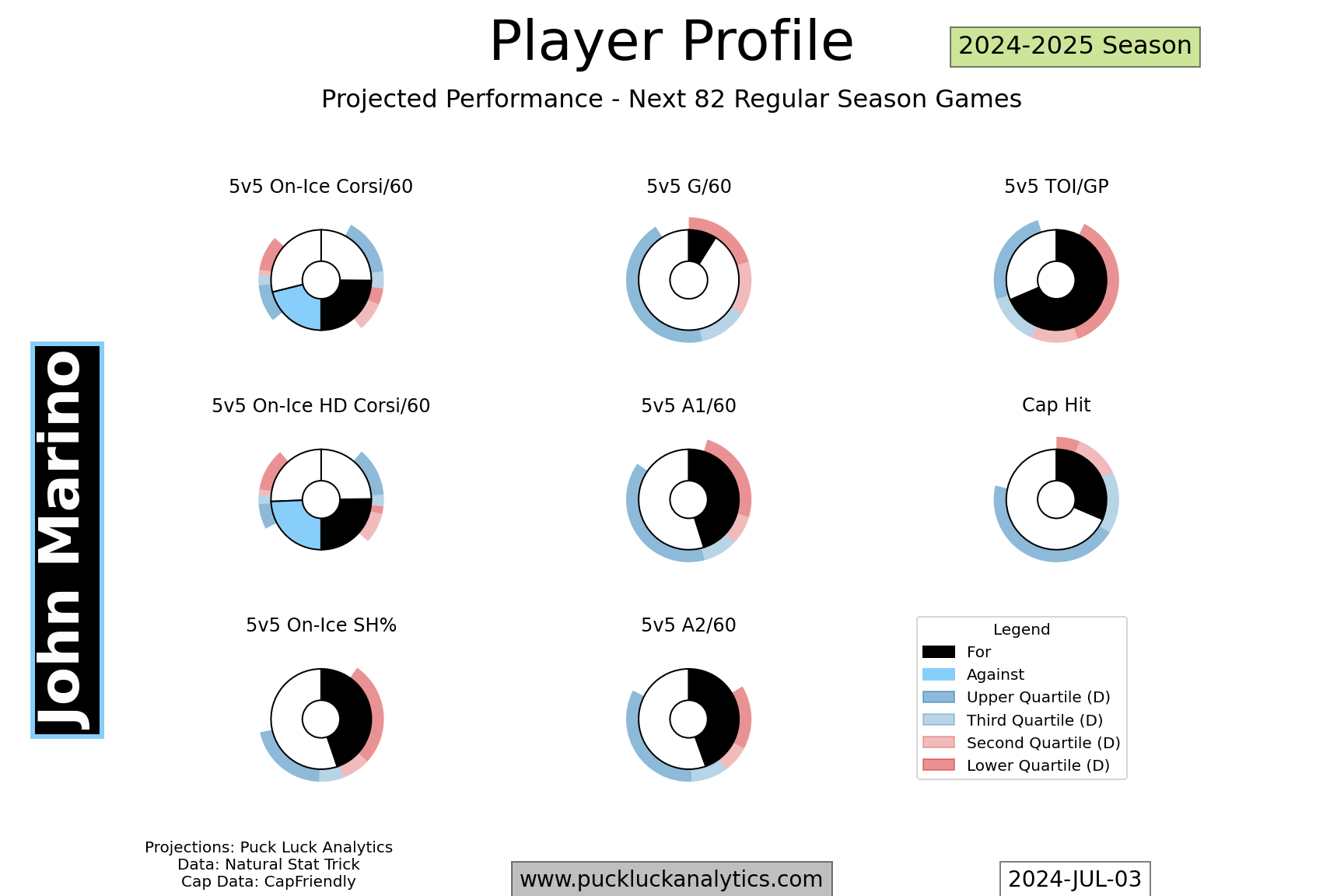
The trades instantly upgraded the Utah defense in a big way. Sergachev profiles like a top pair D. Even better, he’s 26 and signed through his prime years. He fits nicely with Keller and Crouse from an age perspective, adding a high impact defenseman to the current prime cohort. It’s a similar story with Marino at age 27. His impact is not projected to be quite as strong as Sergachev, but he still probably slots in as #2 on the depth chart. All of a sudden, Utah’s prime cohort has a top pair to go along with a couple of good forwards and looks much more capable of carrying the team toward the playoffs.
Young Guns
With two defensemen now added to the prime cohort, Utah’s roster is starting to look more NHL ready. After years of scorched earth roster building, Utah was pretty thin on prime aged and older players and they don’t have to worry much about offloading older veterans to regenerate their future asset base.
What they do have in abundance is prospects and draft picks. The the gains from selling off prime aged players and the Coyotes bad contract laundering service resulted in a very respectable pool of young players to work into the lineup. A few of those picks are already making an impact at the NHL level and can be used to supplement their prime cohort. Dylan Guenther (21) and Logan Cooley (20) are two such prospects that are already making their mark in the NHL.
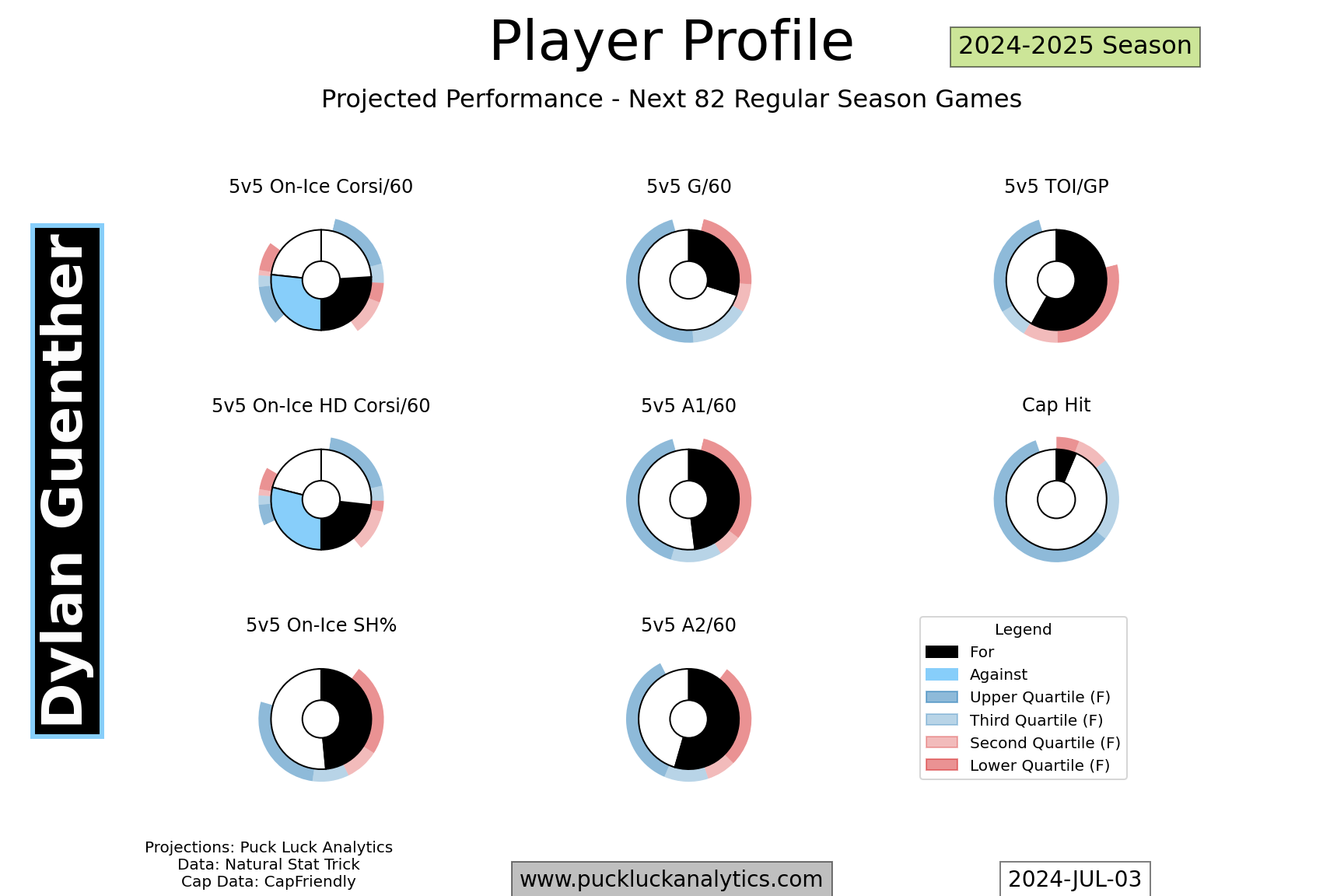
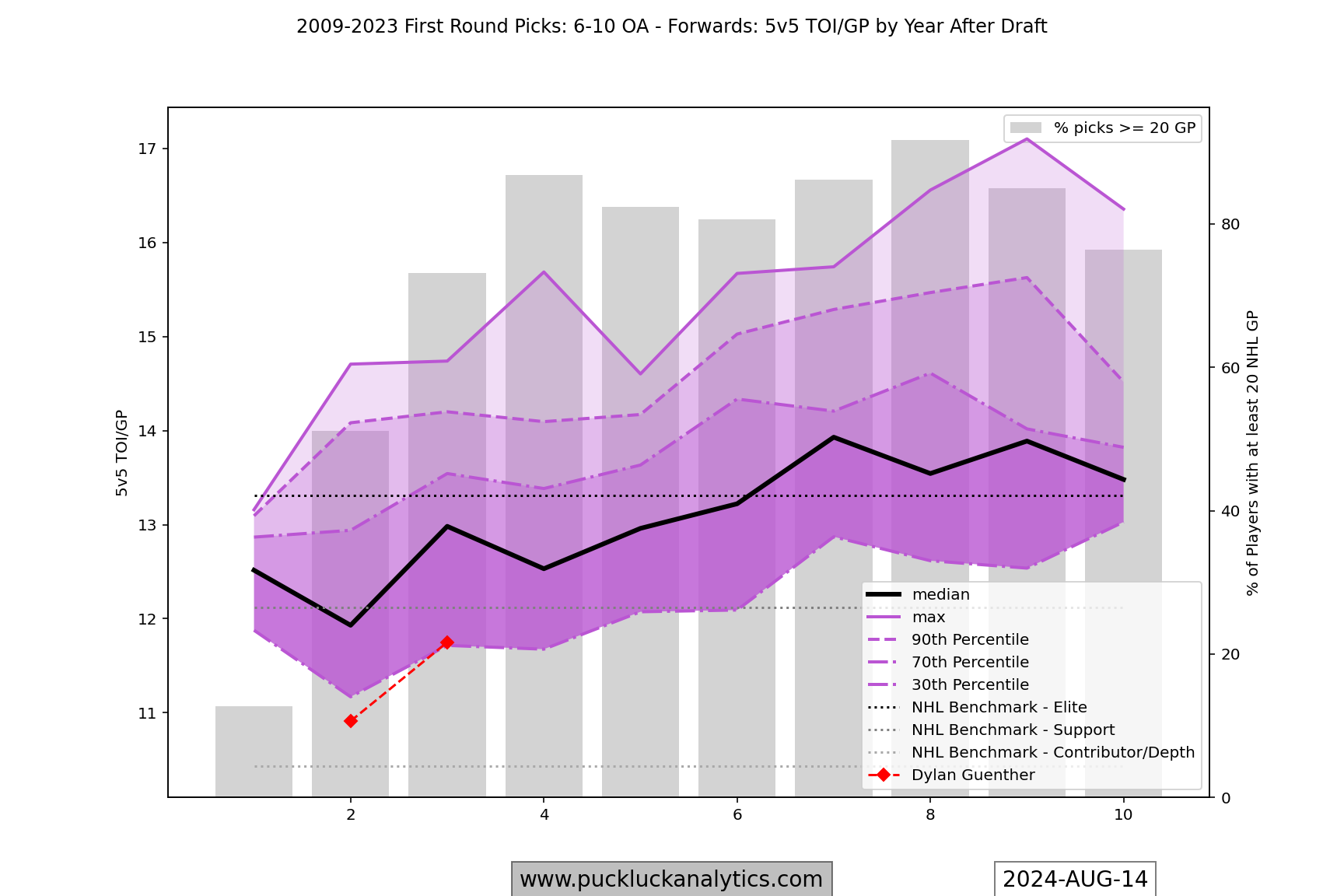
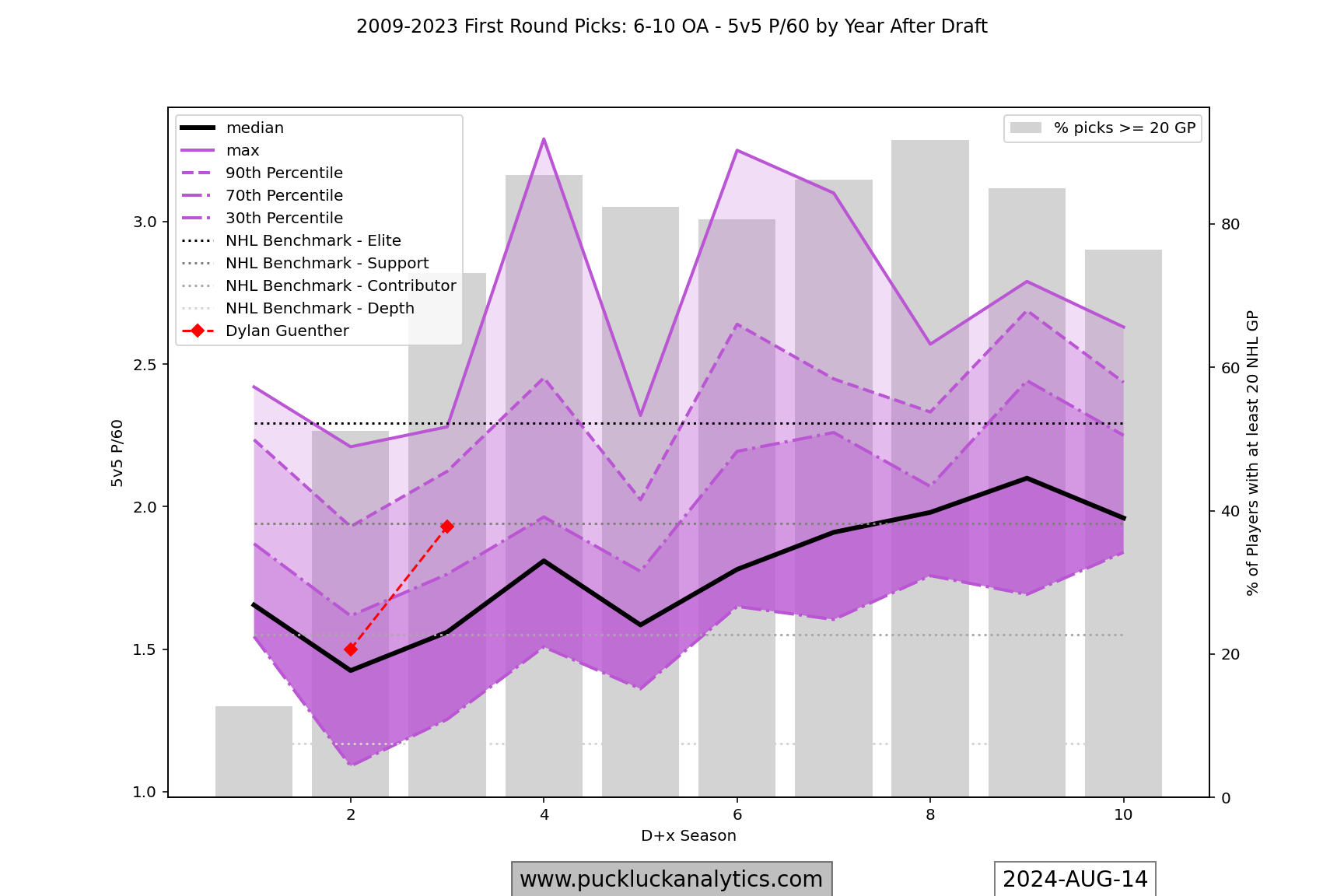
Guenther is already looking like a top six contributor and his production last season has him looking good in comparison to other #6-10 overall picks. With the development trajectory he seems to be on, he could be a capable top line option within the next couple of seasons.
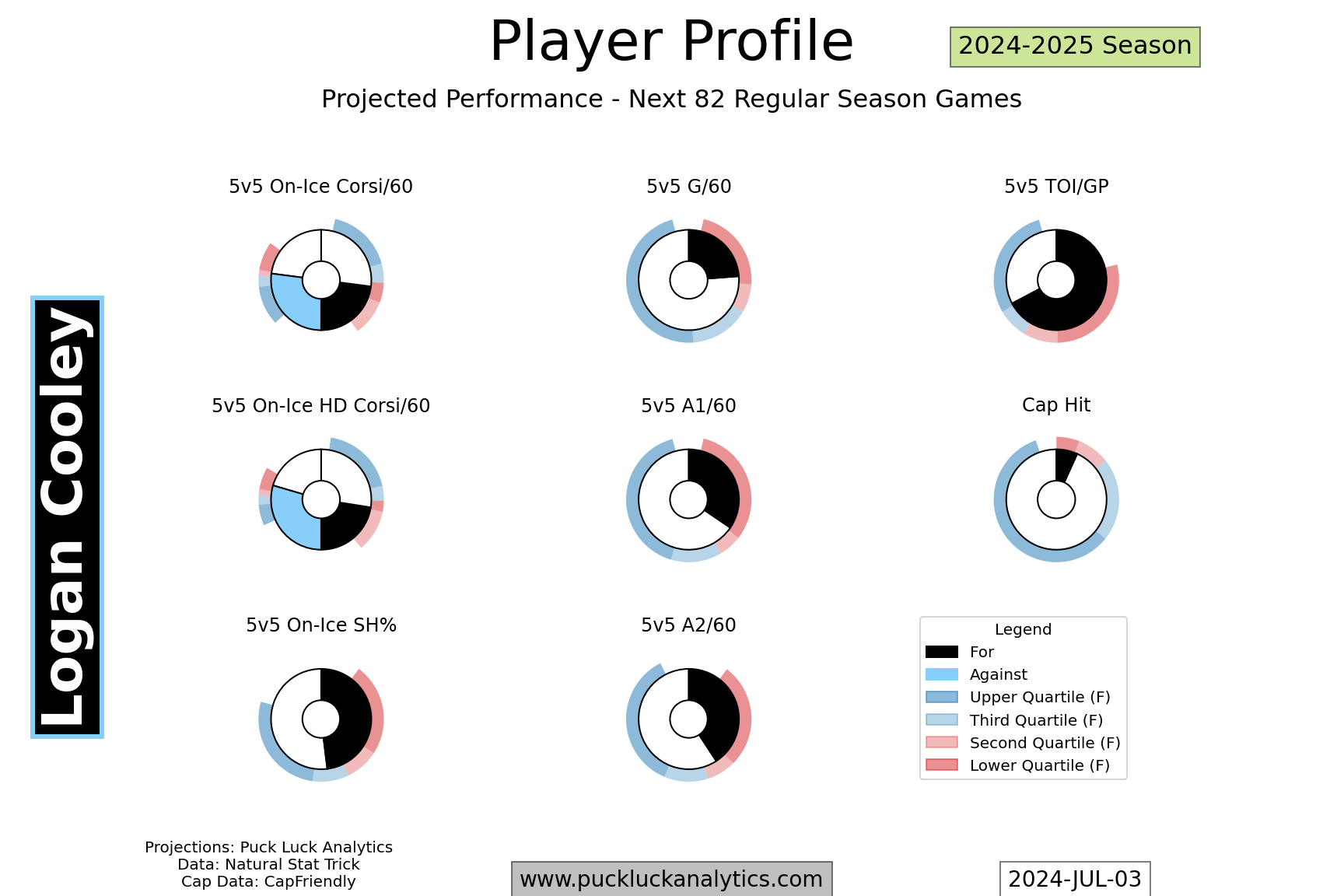
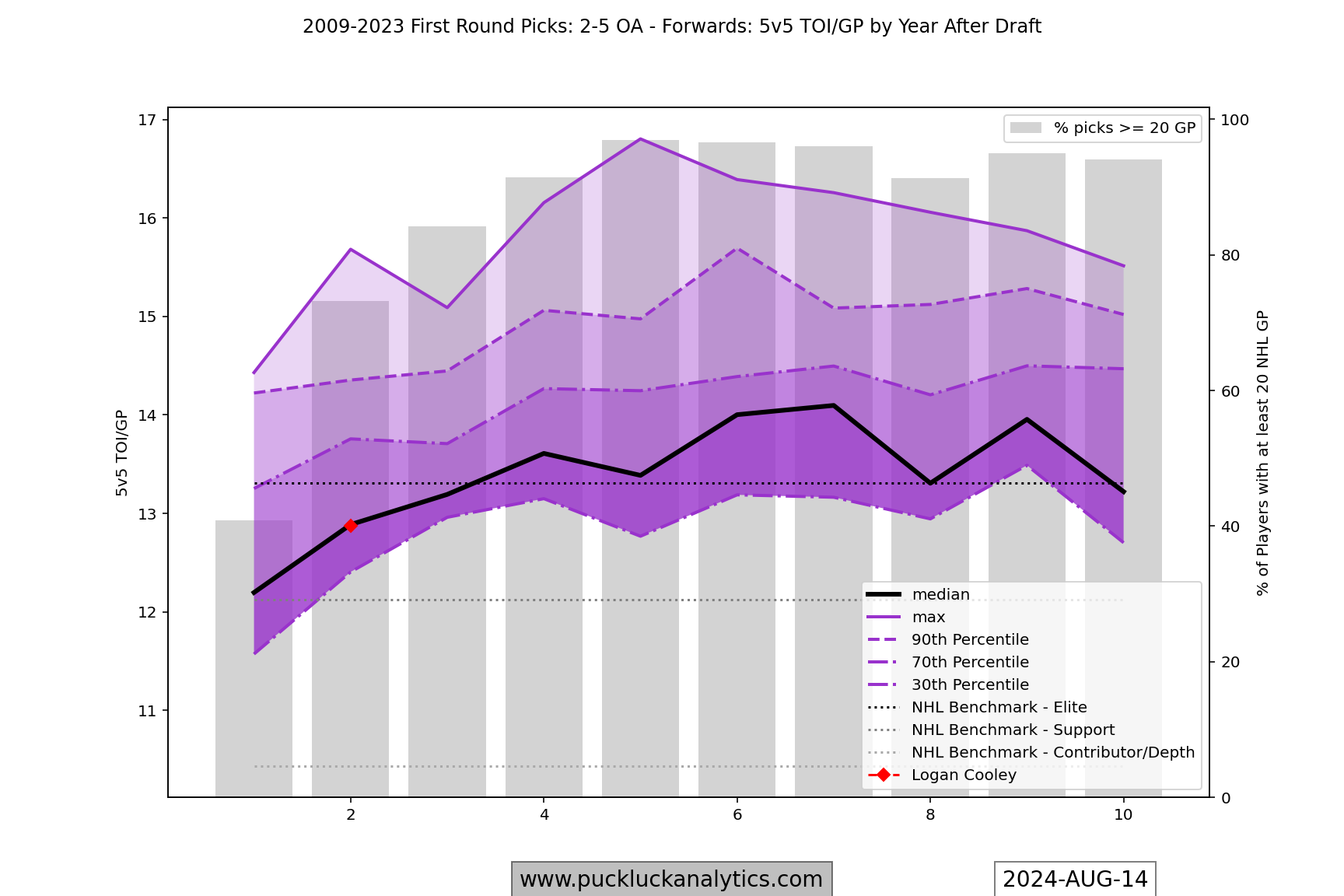
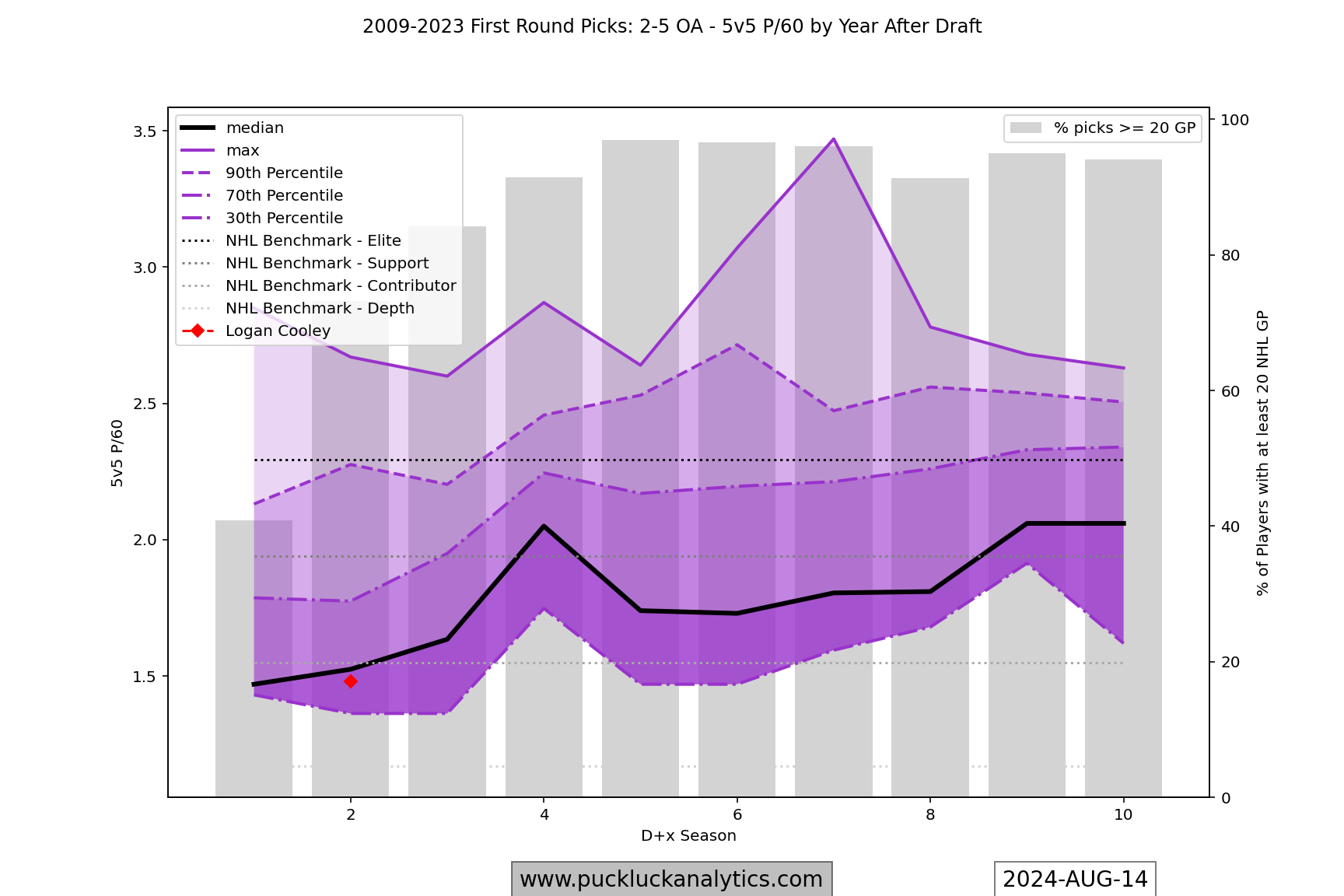
Logan Cooley made the jump to the NHL last season, playing all 82 games in his D+2 season. The 2022 3rd overall pick looked average relative to other forwards picks 2nd to 5th overall, setting him on track to be another young contributor in Utah’s top six. If Utah’s young forwards can take another solid step forward this season, it will be another boost to their fortunes.
There’s more coming too. Utah’s development cohort could be built from their 2024 draft class, headlined by Tig Iginla, and next three drafts. They own all their first round picks for the next three drafts and have amassed a bunch of additional picks. Spending some of that draft capital to bolster their prime cohort and push toward contention would be a traditional strategy but a patient approach could provide even better long term results. Utah is a long way from needing to offload aging veterans and this set of picks could set up a development cohort that can take over when the Keller/Sergachev group nears the end of their prime.
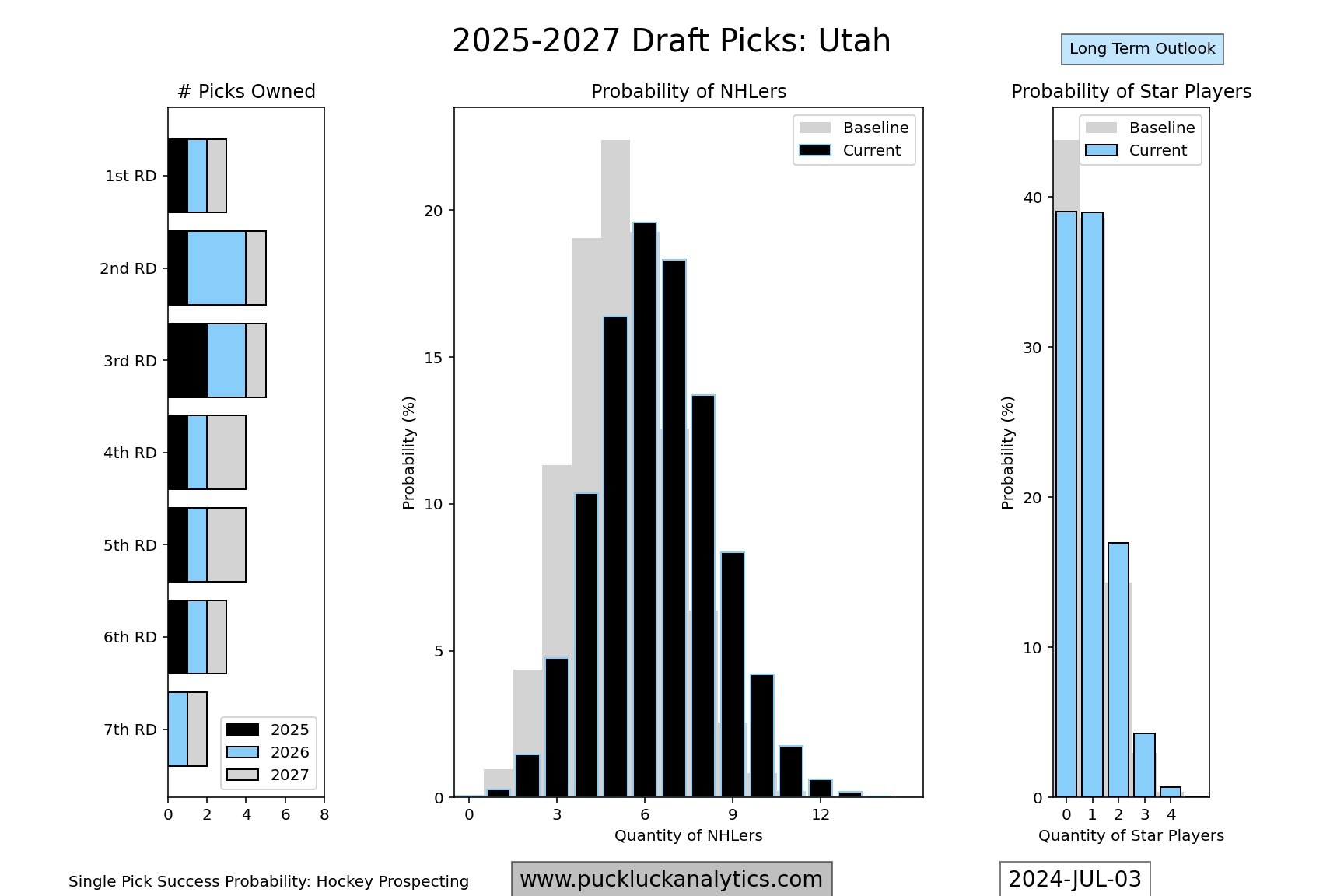
Playoffs?
It’s only one summer, but the Utah Hockey Club already looks much different than the Arizona Coyotes. The front office clearly has a different agenda and they want to put forth a good product on the ice in their inaugural season. They’ve made a number of smart moves to that end, as well as set themselves up for the long term.
It looks like there’s even a decent chance there could be playoff hockey in Salt Lake City next spring. The Central Division looks very competitive in the model, with 6 or 7 teams looking like they have a legitimate shot at the playoffs. Utah is currently projected third in the Central, good enough for a divisional playoff spot and a bit of wiggle room to snag a wild card spot if things don’t go quite that smoothly.
